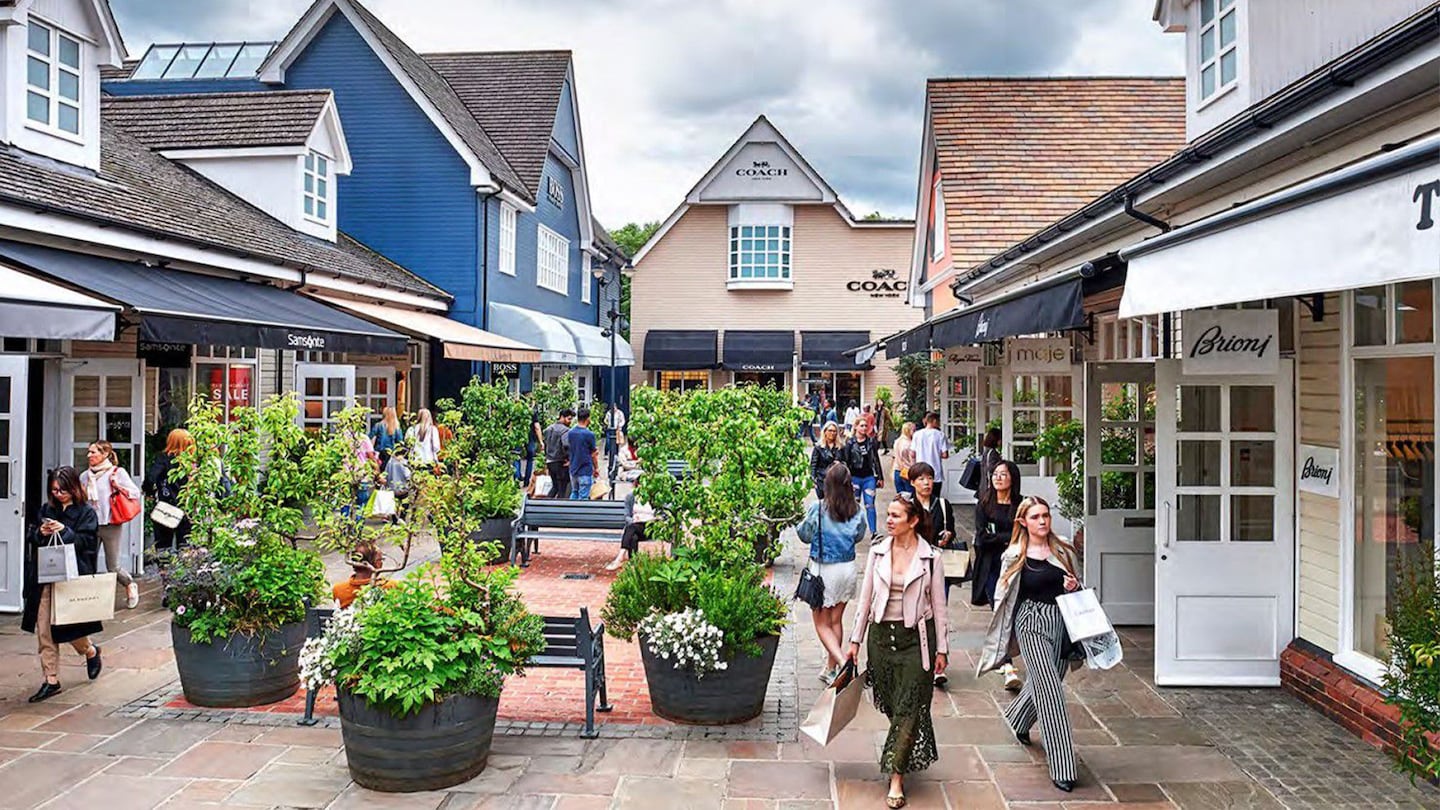
The Business of Fashion
Agenda-setting intelligence, analysis and advice for the global fashion community.

Agenda-setting intelligence, analysis and advice for the global fashion community.

Can luxury brands and discounts co-exist?
Louis Vuitton has long contended the answer is “no,” liquidating old stocks only in tightly-controlled private sales. But the brand is almost unique in its absolutist approach, as even top-end rivals like Hermès and Chanel continue to stage some sale events for clients.
Discounting largely remains a feature, not a bug, of the luxury fashion industry: there’s no sure way to predict which items will sell and in what volumes each season, nor how to price them, and the need to regularly animate stores with new products means finding ways to clear unsold stock. Discounts also help to broaden a brand’s addressable market and keep it relevant to broad swaths of consumers who retain a deal-hunting mentality even when making expensive purchases.
Still, as luxury brands have pushed their prices skyward, it’s become increasingly out of sync with their exclusive image to be seen selling their wares at a discount — whether in their own boutiques or online. And whereas the physical separation between off-price and full-price channels used to keep bargains at bay during the selling season, smartphones and the internet have made comparison shopping both instantaneous and global. Whenever someone, somewhere in the world is selling an item at a discount, closing a full-price sale is now that much harder.
ADVERTISEMENT
As brands juggle the need to preserve their image and drive full-price sales with the need to clear old stocks, major luxury players like Prada and Kering-owned Gucci are increasingly focused on finding ways to separate and control markdowns rather than eliminating them altogether.
They’ve phased out end-of-season sales in their boutiques in recent years and pulled back drastically from discount-prone wholesalers. In the case of online emporiums, where markdowns are particularly visible, Gucci- and Balenciaga-owner Kering has said it wants its brands to either convert to a concession model (where the company maintains control of pricing) or pull out altogether.
Bridge, premium and sportswear brands including Ralph Lauren, PVH’s Calvin Klein and Nike are also on a drive to more tightly control their distribution and limit markdowns. Their pledges to shareholders to curb rampant discounting have run into challenges during the last three years, as the stop-and-start rhythm of coronavirus lockdowns and subsequent rebounds have made inventory planning more challenging than ever.
Plus, brands increasingly face pressure from shocked consumers and government regulators in markets including France to end the longstanding practice of destroying certain unsold products.
Just as they’ve said they wouldn’t, many brands seem to need discounting more than ever.
The Rise of Off-Price
As brands juggle the need to clear inventory with the promise to curb markdowns, the “off-price” channel, which siloes discounting in outlet malls, bargain stores and online liquidators, is on the rise.
While fashion’s post-Covid rebound is expected to cool by 2025, off-price sales should continue to surge, growing five times faster than the full-price segment from 2025 to 2030, according to an April report from consultancy McKinsey.
ADVERTISEMENT
“Brands need to monetize excess inventory in a sustainable way,” McKinsey said. With €40 billion in annual sales in the EU alone, “off-price has become too big for brands to ignore… The predicted growth of off-price creates greater urgency for brands to develop a coherent strategy that can capture more value from this segment.”
The digitalisation of off-price is set to drive growth, particularly in Europe, where markdowns have long been more tightly controlled than in the US: from 2021 to 2025, McKinsey expects 13 percent annual growth for online discounters in the region.
But luxury brands have a longstanding relationship with physical outlet operators, whose destination shopping centres offer both high profitability and physical separation from full-price channels that will be hard to beat.

BestSecret: Off-Price Digitisation
Munich-based BestSecret is one of the discounters that’s been scooping up the momentum in online off-price: last week the e-tailer announced it grew sales 53 percent to €943 million ($1.02 billion) in 2021, as it invested in growing its international customer base in foreign markets under owner Permira, the private equity fund that also owns Golden Goose and Reformation. Sales outside Germany almost doubled to reach 28 percent of revenues.
BestSecret sells products including 70 percent off sneakers from Bottega Veneta, Givenchy logo cardigans and Adidas workout gear as a members-only concept: customers can only access the site after creating an account with a unique referral code.
BestSecret defies many of the cardinal rules of e-commerce: none of the website’s brands or products are tagged for Google and other search engines. Advertisements for the site show the products, but never mention the brands that manufacture them by name.
That’s in a bid to earn the confidence of manufacturers and retailers, by assuaging their concerns about how an off-price presence online could dent their brand image and full-price business.
ADVERTISEMENT
“Brands all have to find a solution to sell off-price online without damaging perception … It’s a business of trust,” said BestSecret’s Chief Supply Officer Jason Visse-Demortier said in an interview in Paris.
Whereas most off-price players have historically depended on the leftovers of wholesalers for the bulk of their inventory, BestSecret sources 95 percent of products directly from brands, Visse-Demortier says.
After cultivating those partnerships, the company hopes it can access a deeper range of items and sizes by transitioning key brands to a concession model. In off-price, “the biggest constraint is inventory,” Visse-Demortier said. “The biggest opportunity is to build a marketplace.”
In addition to boosting BestSecret’s access to inventory, a concession model could grant brands higher control of pricing, selection, and product presentation. The downside is that they lose one of off-price’s historic advantages: the opportunity to dump old stocks for cash, then walk away. They’ll have to actively manage those concessions instead while keeping old product on hand.

Value Retail: Outlets Rebound
While off-price activity online is expected to surge, physical outlets are investing heavily to retain their primacy in the luxury segment.
“Physical is the only logical and enduring channel,” said Scott Malkin, founder and chief executive of Value Retail. The group operates key luxury outlet malls like the Bicester Shopping Village near London Heathrow Airport and La Vallée Village, near Paris’ Disneyland, which regroup outlets for brands including Burberry, Gucci, Bottega Veneta, Prada, Versace and Zegna.
Value Retail has faced a rough couple of years: the collapse of long-haul travel since the coronavirus pandemic meant fewer tourists to entice with their mall’s signature combination of duty-free rebates and outlet prices. It’s a combo that’s long had shoppers buying a stack of €200 Prada crewneck sweaters or €100 Gucci scarves faster than you can say “daigou” (the practice of Chinese shoppers reselling duty-free purchases at attractive prices back home).
But the company says it’s on track to get sales back to 2019′s pre-pandemic levels this year, as it engaged in splashy ad campaigns and mall-wide promotions to attract a new following, comprised of fewer long-haul visitors and more domestic tourists, as well as locals looking for a day out. The company is also working to build its first mall in the United States, near JFK airport in New York.
“We used to exist to serve the travelling luxury consumer, now we exist to serve the travelling luxury consumer who’s staying at home,” said Scott Malkin, Value Retail’s founder and chief executive. “We see that as soon as coronavirus restrictions are lifted, footfall is higher than it’s ever been.”
The advantage of Value Retail’s outlets, according to Malkin, is the physical “friction” between their locations and the city centre — they are separated by 45-minute-plus train journeys from posh luxury shopping streets, helping to prevent cannibalisation of full-price sales in a way the internet cannot replicate. “The sale of authentic, surplus merchandise cannot occur online in any reliable and consistent way without destroying brand equity,” he said.
The other bonus for brands is that they control the prices, selection, and experience of clients in their outlets. Luxury players’ markups are typically high enough that they can still invest in an immersive, attractive retail experience at off-price while maintaining profitability: suburban outlet locations are far cheaper to operate, and many brands elect to beef up their selection by offering high-margin carry-over items alongside the hodgepodge of prior-season ready-to-wear and returned shoes.
“As brands sell more online, every physical touchpoint has to be a flagship experience,” Malkin said. “Our business is now well beyond offering a safe channel [for discounting], and is rather a complementary distribution method focused on full-price customer acquisition.”
No One Way to Win
Some investors and analysts remain sceptical of Malkin’s pitch. Burberry, for example, has been criticised for leaning too heavily on its off-price locations.
The British brand’s “elevated positioning is almost incompatible with its significant exposure to outlets” HSBC analyst Aurélie Husson-Dumoutier said in a note to clients highlighting the brand’s 58 off-price locations. “For us, it’s one or the other. No other high-end luxury brand has this type of exposure.”
For McKinsey, brands need to learn to leverage both online and offline off-price opportunities, understanding the pros and cons of each one.
Luxury brands mostly remain committed to traditional, physical channels for discounting including physical outlets or friends-and-family sale events.
But as they sell more online, they could need more ways to discount online, too — all while hoping to reduce their exposure to brand-damaging public markdowns.
They’ve started testing the waters of sites like BestSecret and luxury flash sale site The Bradery (which was acquired last week by ShowroomPrivé). LVMH recently invested in the mystery-box off-price start-up Heat, which spreads markdowns across multiple items in bundled deals to obscure steep discounts.
“Brands must take a multipronged strategy to maximise revenues for both [online and physical off-price] and to recur their brand equity — without cannibalising full-price offerings,” the consultancy said.
For luxury, that’s a tall order.
LVMH’s venture arm joined the seed funding round of start-up Heat, which has tapped into Gen-Z’s appetite for social commerce and resale by selling surprise selections of high-end products.
Last year, American retailers seemed to have broken their habit of relying on deep promotions, thanks to limited inventory and pent-up demand. These beneficial circumstances, experts say, may be disappearing in 2022.
The brand’s first in-person show since 2019 was yet another effort to straddle the line between luxury and mass appeal

Robert Williams is Luxury Editor at the Business of Fashion. He is based in Paris and drives BoF’s coverage of the dynamic luxury fashion sector.
The Swiss watch sector’s slide appears to be more pronounced than the wider luxury slowdown, but industry insiders and analysts urge perspective.
The LVMH-linked firm is betting its $545 million stake in the Italian shoemaker will yield the double-digit returns private equity typically seeks.
The Coach owner’s results will provide another opportunity to stick up for its acquisition of rival Capri. And the Met Gala will do its best to ignore the TikTok ban and labour strife at Conde Nast.
The former CFDA president sat down with BoF founder and editor-in-chief Imran Amed to discuss his remarkable life and career and how big business has changed the fashion industry.